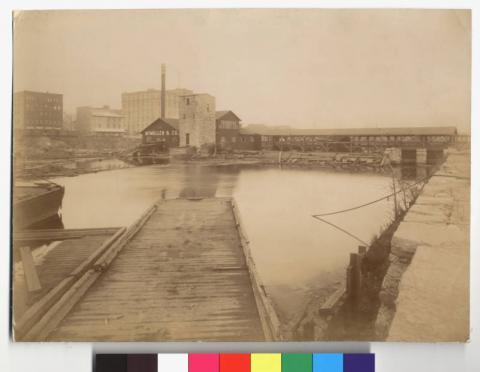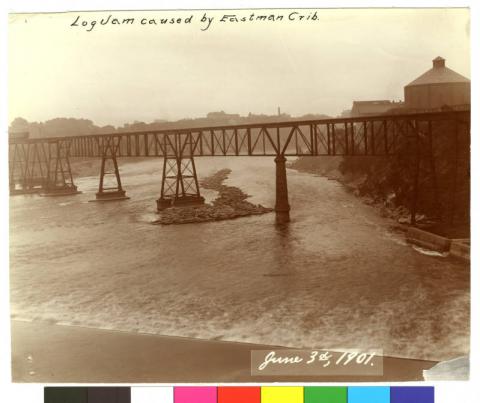Primary Source Set
by Beth Staats, Reference Outreach & Instruction Librarian, Minitex
Business and Industry Environment
The Mississippi River, centerpiece of the second largest watershed in the world, begins as a tiny stream in Itasca State Park, MN, and runs all the way to the Gulf of Mexico. It flows through 10 states and is 2,340 miles long, the second longest river in the U.S. next to the Missouri. The 29 lock and dams on the upper Mississippi River make it possible to ship millions of tons of freight each year. The Mississippi River was essential to the growth of Minneapolis as people settled in the area because of the river. The cities first settlement was near the Mississippi River's only waterfall, St. Anthony Falls. Eventually, the power of the falls was harnessed for lumber and flour milling industries and the growth of settlements along the river gave rise to the city of Minneapolis.
Discussion Questions & Activities
- How did Minneapolis businesses near the river use St. Anthony Falls to their advantage beginning in the 1850s?
- What are some ways you are directly related to the Mississippi River and St. Anthony Falls?
- What is the greatest industry of Minneapolis, and why?
- Check out Forests, Fields, and the Falls for classroom activities.
- See resources at the Mississippi River Connections Field Trip.
- Look at the Journey to the Falls Teacher Guide.
eLibrary Minnesota Resources (for Minnesota residents)
Minneapolis. Britannica School. Encyclopædia Britannica, Inc., 9 Feb. 2015. Accessed 21 Jul. 2016.
St. Anthony Falls. Image. Britannica School, Encyclopædia Britannica, 8 Apr. 2019. school-eb-com.content.elibrarymn.org/levels/high/assembly/view/74487. Accessed 17 Jul. 2019.
"Video: Behind the Scenes: U of Minn.'s St. Anthony Falls Lab." Local Broadcast Video Content 16 Sept. 2014. Student Resources in Context. Web. 21 July 2016.
Additional Resources for Research
History. Mill City Museum, Minnesota Historical Society. Accessed October 22, 2024.
National Center for Earth-surface Dynamics. A History of St. Anthony Falls, 2019. Retrieved July 07, 2020.
St. Anthony Falls Heritage Board. Mill City Museum, Minnesota Historical Society. Accessed October 22, 2024.
St. Anthony Falls Historic District. Minneapolis Community Planning & Economic Development. Accessed October 22, 2024.
St. Anthony Visitor Center Lock and Dam. Mississippi National River & Recreation Area, National Park Service. Accessed October 22, 2024.
Published onLast Updated on








